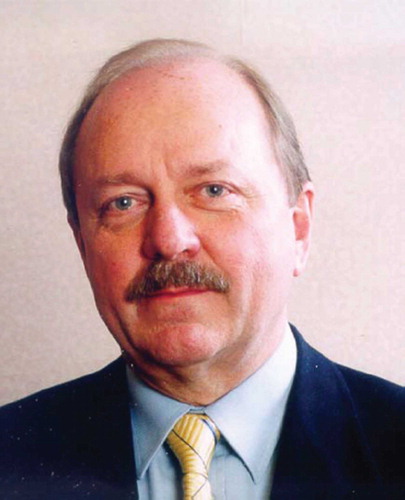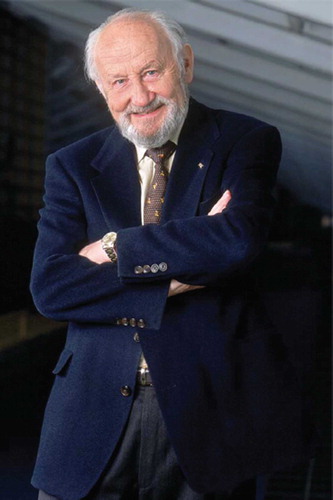Hypertension research in the Nordic area of Europe has longstanding traditions. Tigerstedt and Bergman, von Euler, Hood, Folkow, Hilden, Storm Mathiesen and Humerfeldt were some of the pioneers until around 1960, when Lund-Johansen, Giese, Berglund, Lithell and later Omvik, Ibsen, Eide, Fyhrquist, Lindholm and Hansson took over the leadership. Lennart Hansson , who passed away in 2002 from cancer, founded Blood Pressure in 1990 in a response to the escalating numbers of hypertension studies in the Nordic countries and the need for improved publications access. In the year 2000, somewhat by coincidence, Lennart organized the 10th European Meeting on Hypertension in his home town of Göteborg, Sweden and simultaneously issued the 10-year jubilee issue of Blood Pressure in honor of Nordic hypertension research.
An important part of Nordic hypertension research has long been the design and performance of large randomized outcomes trials. The Oslo Study (Citation1) came out in parallel with a dozen or so other randomized controlled trials in the United Kingdom, Australia and United States of America about 30 years ago. It showed major benefits of drug treatment in preventing stroke and heart disease in subjects with mild to severe hypertension. Later trials, including the Nordic MAPPY and HAPPY studies, found diuretics and beta-blockers equally effective in preventing these outcomes.
More recently, trials initiated by Lennart Hansson and published in Blood Pressure have dominated the literature and discussions at congresses. The most important of these studies, now remembered by their acronyms, STOP, HOT, STOP 2, CAPPP and NORDIL, established for the first time the benefits of treating hypertension in the elderly and of using calcium antagonists and angiotensin converting enzyme inhibitors as effective alternatives to diuretics and beta-blockers for the treatment of hypertension. Hansson also initiated SCOPE and mentored the investigators who designed and conducted LIFE and ASCOT, major trials that enrolled a predominance of Nordic patients. He was involved, either directly or through former trainees and his beloved mentor Stevo Julius, of the University of Michigan, in trials such as VALUE and ACCOMPLISH (Citation2) that established the importance of newer drug treatments, such as angiotensin receptor blockers and the combination of angiotensin converting enzyme inhibitors with calcium antagonists in the management of high risk hypertensive patients.
Lennart Hansson, MD, PhD, professor at the University of Uppsala and founding editor of Blood Pressure (†2002).

Stevo Julius, MD, ScD, professor emeritus of University of Michigan and recipient of the 2010 Alberto Zanchetti Life Achievement Award.

To coincide with the 20th European Meeting of Hypertension in Oslo, Blood Pressure pays tribute to Nordic hypertension research by issuing this 20-year jubilee issue with articles highlighting current research in the Nordic region. This issue contains a thorough review of the implications of subclinical organ damage in hypertension, a topic first discussed in the European Hypertension Guidelines of 2002 (Citation3), as well as original research related to the outcomes in patients with subclinical organ damage who were enrolled in the SEAS and LIFE studies. Other papers discuss biomarkers of atherosclerosis and angiotensin II induced cardiac remodeling in the hypertensive patient and critically review the important topic of treatment to target. Moreover, the effects of smoking on the sympathetic nervous system is assessed (Citation4), which provides further insight into how smoking may be linked to cardiovascular events. Of particular interest is the article on HIV duration and ambulatory blood pressure: the prognosis of patients with HIV infection has improved to the extent that the diagnosis and treatment of hypertension have become important issues in their management (Citation5).
Finally, we proudly but briefly mention that the Editors of Blood Pressure are also involved in the activities of the 20th European Meeting in Oslo, to which this 20-year jubilee issue is dedicated. K. Narkiewicz is current president of the European Society of Hypertension, T. Hedner is former secretary of the European Society of Hypertension and recipient of the 2010 Lennart Hansson Award (and Lecture), S. Oparil is past president of the American Heart Association and the American Society of Hypertension, and S.E. Kjeldsen is past president of the European Society of Hypertension and chairman of the 2010 Oslo meeting. Last, but not least, Olle Melander of Lund University will receive the Peter Sleight Award and Stevo Julius, honorary chairman of the 20th European of Society of Hypertension Meeting, will receive the Alberto Zanchetti Life Achievement Award during the 20th European Society of hypertension Meeting in Oslo in 2010.
References
- Helgeland A. Treatment of mild hypertension: a five year controlled drug trial. The Oslo Study. Am J Med 1980;69: 725–732.
- Jamerson K, Weber MA, Bakris GL, Dahlöf B, Pitt B, Shi V . Benazepril plus amlodipine or hydrochlorothiazide for hypertension in high-risk patients. N Engl J Med 2008;359: 2417–28.
- Kjeldsen SE, Erdine S, Farsang C, Sleight P, Mancia G. 1999 WHO/ISH Hypertension guidelines – highlights and ESH update. J Hypertens 2002;20:153–55.
- Hering D, Kucharska W, Kara T, Somers VK, Narkiewicz K. Smoking is associated with chronic sympathetic activation in hypertension. Blood Press 2010, 19:152–155.
- Manner IW, Bakken M, Oektedalen O, Sandvik L, Os I. Effect of HIV duration on ambulatory blood pressure in HIV infected individuals with high office blood pressure. Blood Press 2010, 19:188–195.
